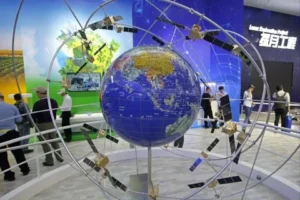Mars’ atmosphere is much thinner than Earth’s, which means that spacecraft have less air resistance to slow them down, resulting in a shorter “runway” for landing. To safely land anything on the Martian surface, NASA needs multiple systems. First, a heat shield slows the craft as it enters the atmosphere. Then, parachutes are deployed, followed by rockets to slow the descent further. In the case of the Spirit and Opportunity rovers, airbags were used to cushion the final landing.

Essentially, NASA relies on a combination of four or five systems to decelerate the spacecraft enough to ensure a safe landing, as no single method is reliable enough on its own. Unfortunately, there have been several failures in attempts to land rovers and landers on Mars’ surface, highlighting the complexity and risk of the endeavor.
Last Attempt
The last attempt to get a lander on Mars failed when the European Space Agency’s Schiaparelli EBM lander couldn’t slow down fast enough. And In 1999 NASA’s Mars Polar Lander suffered a similar fate.
But of course there are successes too on top of the Rovers NASA currently has operating on the Red Planet , they successfully placed the Phoenix Rover in August of 2007 as well.
If you liked what you read. Please Like, Comment and Share.

Landing on Mars is incredibly difficult due to a combination of factors that make the process both complex and high-risk. NASA refers to this critical landing phase as the “Seven Minutes of Terror” because of the extreme challenges involved and the fact that they can’t communicate with the spacecraft during this time. Here are the key reasons why landing on Mars is so hard:
1. Thin Atmosphere
Mars’ atmosphere is only about 1% the density of Earth’s. This means it offers very little resistance to slow down a spacecraft entering from space. On Earth, a spacecraft can rely on air friction to slow down, but on Mars, this is far less effective. The thin atmosphere makes it challenging to use traditional methods like parachutes to decelerate the spacecraft enough to land safely.
2. High Speed and Rapid Deceleration
Mars missions typically enter the atmosphere at speeds of over 12,000 miles per hour (MPH). To land safely, the spacecraft must slow from this high velocity to zero in just about six minutes. This is an incredibly short period of time to decelerate, which is why NASA needs multiple systems working together in a precise sequence to slow down the craft.
3. No Real-Time Communication
During the landing process, it takes signals over 13 minutes to travel between Earth and Mars due to the vast distance between the two planets. This means that NASA cannot control the spacecraft or intervene if something goes wrong in real time. The entire descent must be automated, with the spacecraft relying on pre-programmed systems to navigate and land without human intervention.
4. Gravity Differences
Mars’ gravity is about 38% that of Earth’s, meaning objects weigh less on the Red Planet. This difference can affect how the spacecraft descends and lands, requiring specialized technology to control the descent speed and ensure a soft landing.
5. Unpredictable Terrain
Mars’ surface is filled with craters, rocks, and uneven terrain, making it difficult to select a landing site. A safe landing zone must be identified before the mission, but even then, there are risks of landing on unexpected hazards that could damage the spacecraft or interfere with its landing systems.
6. Reliance on Multiple Systems
Given the difficulty of landing on Mars, NASA employs a combination of systems to slow down the spacecraft. These include:
- Heat Shield: To protect the spacecraft from the intense heat generated during entry into the atmosphere.
- Parachutes: To slow the spacecraft further after it enters the atmosphere.
- Rockets: To provide additional braking power as the spacecraft nears the surface.
- Airbags (for rovers): Used in some missions, like Spirit and Opportunity, to cushion the final impact.
Each of these systems must function perfectly, and any failure could result in the mission’s loss.
7. History of Failures
Mars exploration has been fraught with failures. Many missions have ended in failure during landing due to technical malfunctions, insufficient testing, or unexpected conditions. For example, in some cases, parachutes didn’t deploy correctly, or the landing sequence didn’t execute properly, leading to crashes or equipment loss.
These factors combine to make landing on Mars one of the most difficult and high-risk operations in space exploration. NASA’s “Seven Minutes of Terror” is a reminder of the immense challenges faced during this critical phase, where a mission’s success or failure hinges on precision, luck, and technology working together flawlessly.





